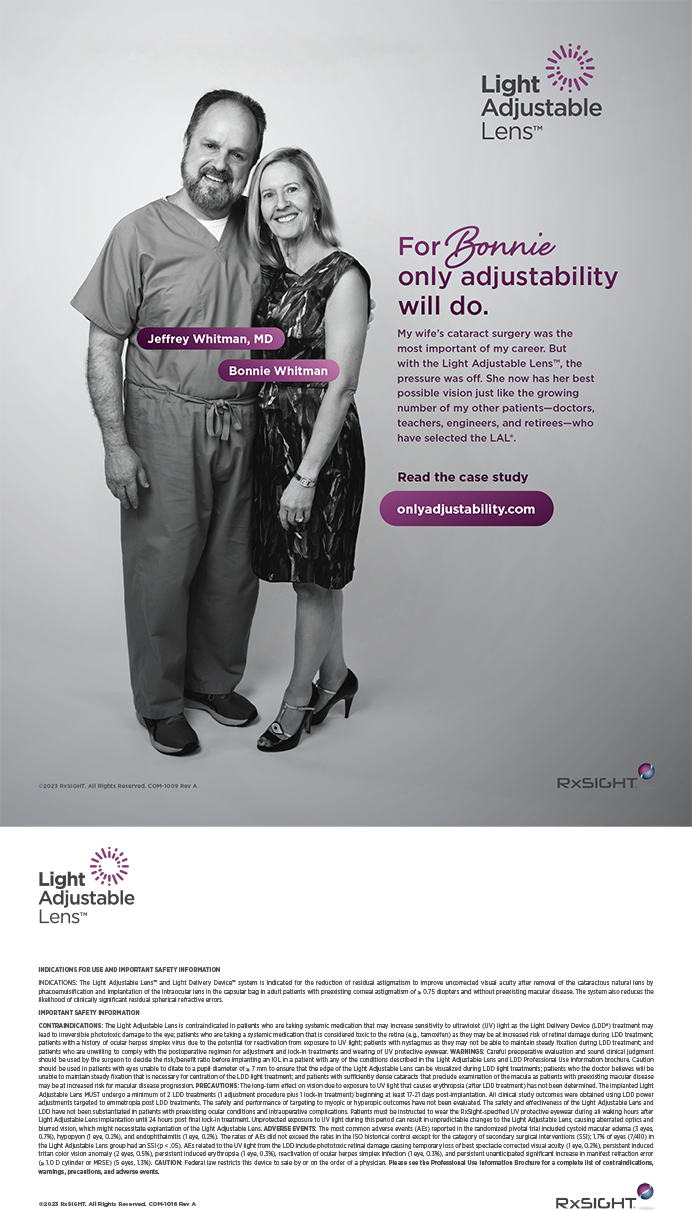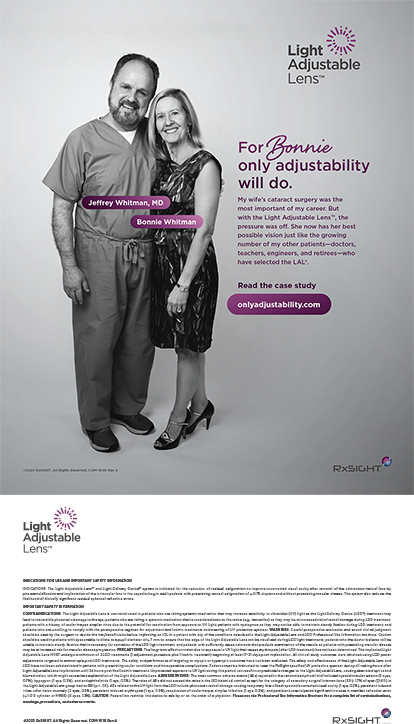I've been interested for some time about the potential advantages of using a bimanual technique with phacoemulsification. At first, the idea did not seem viable because the wound must be reopened to insert an IOL. I also realized that if we have to continue to wrap an irrigation sleeve around our phaco needle, our wounds would never become smaller than 2.5 to 3 mm. Therefore, I began working with microphaco to investigate whether this technique could provide any advantages over traditional phacoemulsification.
INTRODUCTION TO WHITESTAR™
The studies we conducted showed that using microphaco with very little ultrasound can be safe, but we were still hesitant to use ultrasound with a bare needle. Part of the reason to wrap irrigation around the phaco needle is to prevent unusual heat buildup. Once I was introduced to WhiteStar,™ however, it seemed as though the system had the ability and the appropriate parameters to minimize heat buildup, so we conducted a study in which we used a bare phaco needle to operate on human eyebank eyes. We used the second irrigating chopping instrument, and made two tight stab incisions. Next, we inserted a thermistor to continuously monitor the temperature inside the wound. Even while blocking all of the aspiration to the phaco needle (by clamping the aspiration to the needle) while using 100% power, we found ourselves unable to elevate the temperature of the needle above 32&Mac251;C. I haven't seen anything like it. I believe that this technology will make it impossible to induce a wound burn, whether employing microphaco or traditional phacoemulsification. WhiteStar™ technology is the perfect mate for microphaco, as well as for any other technology, as it offers the power of ultrasound in addition to eliminating wound burn.
WhiteStar™ brings microphaco to a whole new level, which will also benefit from 21-gauge technology. The term, 21-gauge technology, means that the typical diamond stab incision is 0.8 mm (it is the size I am currently using with my stab incisions), which can fit a 21-gauge irrigating chopper and a 21-gauge irrigating needle. With this technology, I've been able to remove approximately 30 hard cataracts through two 0.8-mm incisions. The report on my first 50 hard cataracts will be available by the end of December or early January. I am not aware of any surgeon having previously removed cataracts with 21-gauge technology; however, I understand that there are now a few physicians who are starting to try. In my series, there have not been any complications associated with the nucleus removal. Interestingly, there are lenses being developed that can take advantage of these very small wounds. I think the technology of removing cataracts through such small incisions will push the technology of lenses, so that we will increasingly be able to take advantage of these small wounds even with new lens insertion techniques.
BIMANUAL TECHNIQUE
I use a 21-gauge custom irrigating chopper that has a head that I designed several years ago (Figure 1). The chopper, which is made by both Rhein Medical (Tampa, FL) and ASICO (Westmont, IL), has a hollow needle with two holes far forward on the tip that maintain the chamber. The chopping hand is located toward the end of the needle. I create one stab incision, and then use the bare phaco needle to apply the phacoemulsification energy. I then perform my regular chopping technique. I had thought that microphaco would only allow chopping, but WhiteStar™ permits the divide-and-conquer technique. I have even performed a few divide-and-conquer surgeries that worked well and were completely safe when I applied additional ultrasound energy. So far, in the series of 50 upon which I have operated, the corneas look great, and there have been no complications. My average phaco time has been under 1 second. It will be the first time anybody has removed regular hard senile cataracts through 0.8-mm incisions.
WHITESTAR ™ Benefits with microchatter
One exciting feature of the WhiteStar™ technology has to do with a concept called microchatter. We know that gross chatter occurs when the ultrasound energy and aspiration forces cause a hard piece of nucleus to bounce back and forth in front of the phaco tip. We only recently realized that in almost every circumstance there is a much finer microchatter, stemming from the actual sonification of the material, at intervals so brief that it may last a matter of a few milliseconds. The energy imparted by that microchatter pushes material away, at a ratio of approximately 2 to 1. I believe this microchatter occurs in every circumstance, which means that a great deal of ultrasound energy is inefficiently used. However, WhiteStar™ allows the user to adjust the parameters to improve followability, which reduces repulsion. The system also makes cutting more efficient by only cutting when the nuclear chip is against the phaco needle.
I appreciate the fact that the WhiteStar™ technology does not have a significant learning curve; in addition, it will work with the surgeon's chosen technique. The biggest difference surgeons will notice using the system is that their ultrasound time will dramatically decrease, even though they perform the procedure in the same manner that they did previously.
Randall J. Olson, MD, serves as Director of the John A. Moran Eye Center, as well as Chairman at the University of Utah Department of Ophthalmology in Salt Lake City. Dr. Olson may be reached at (801) 585-6622; randall.olson@hsc.utah.edu

